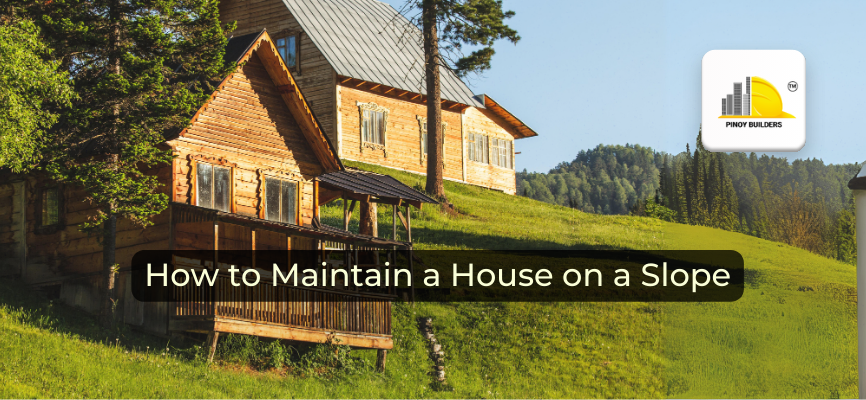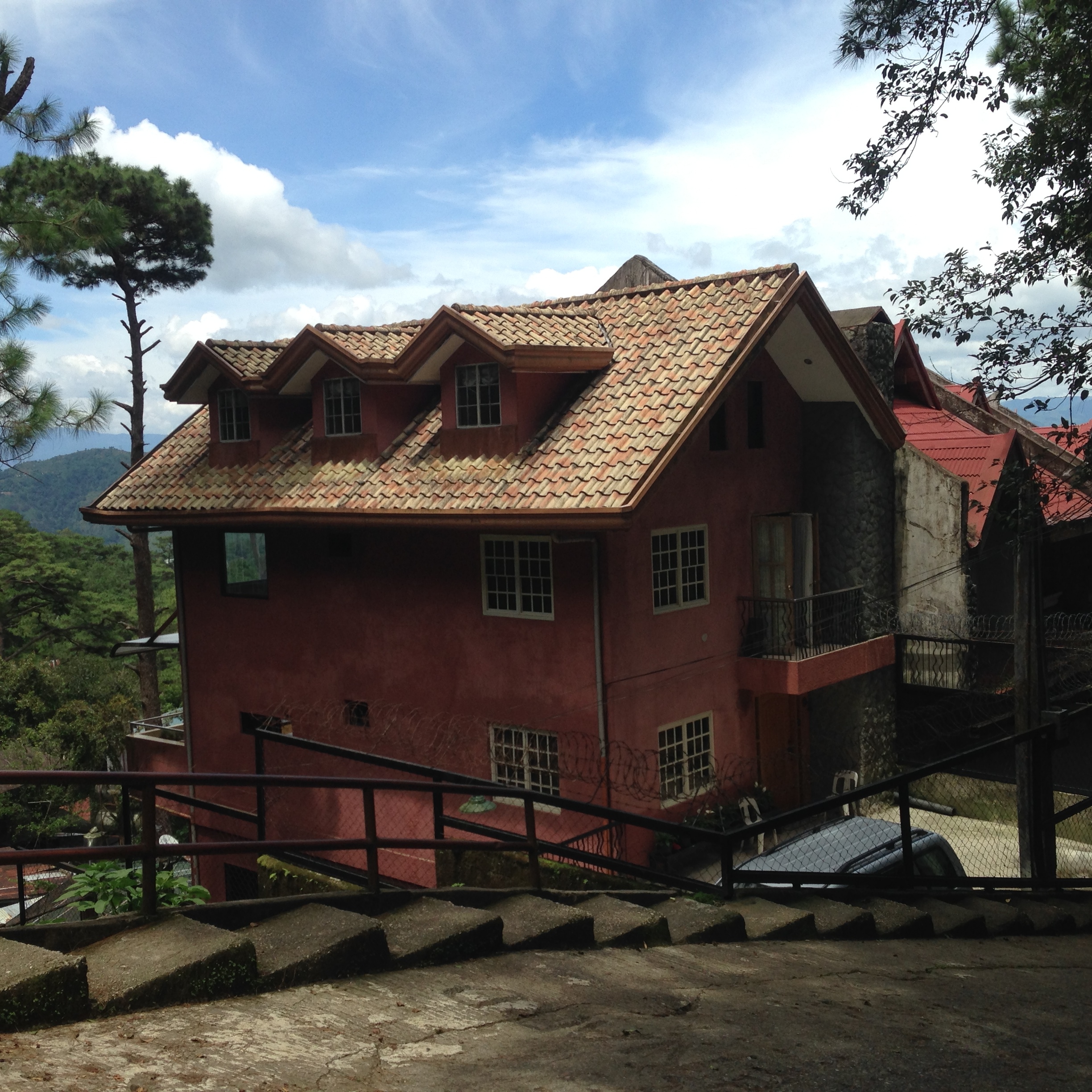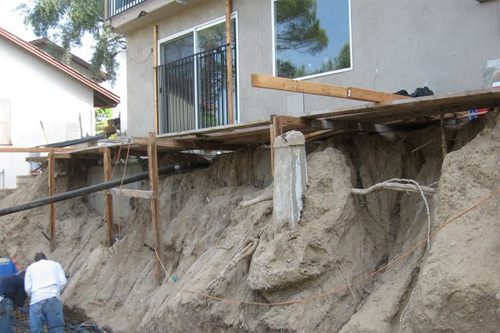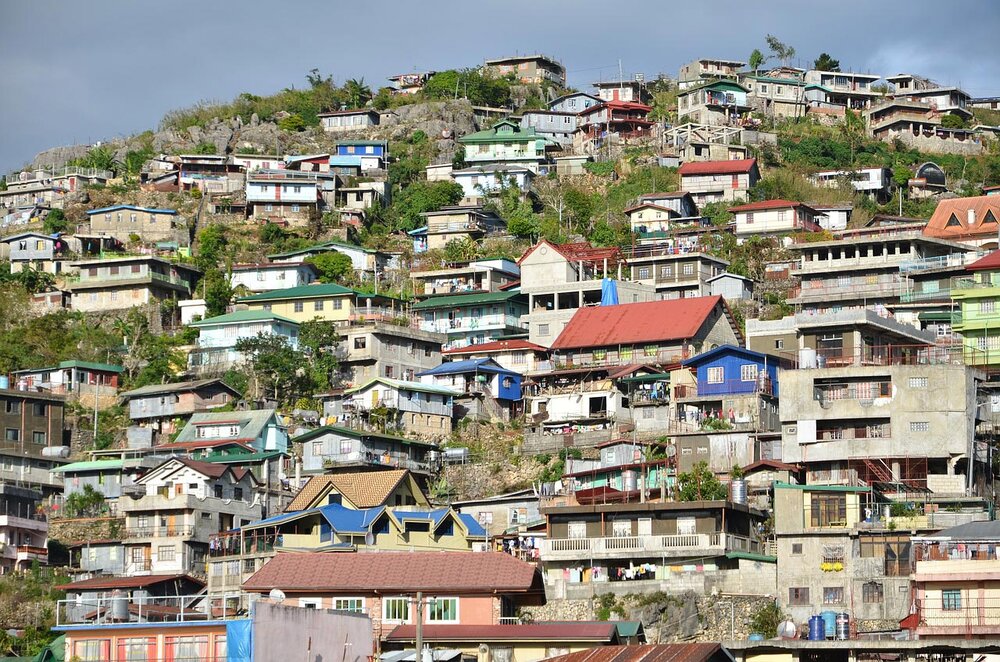Many of Baguio’s homes are located at the peak or bottom of privately owned hillsides, with homeowners’ organizations sometimes maintaining these slopes. In all other circumstances, each owner must maintain and repair their pitches, including drainage equipment.
Photo Courtesy: Airbnb
Slope maintenance also involves continuous vegetation management, such as removing grass and overgrown brush.
It’s vital to remember that slope movement or failure can result in property damage, and in worst-case scenarios, endanger your safety. To manage their slope property, homeowners can implement many basic and inexpensive housekeeping techniques.
RELATED: Here’s How Stainless Steel Buildings are Maintained
Maintenance Guidelines for Slope
All slope improvements, including walls, fences, and plant material, must be kept in good repair so that they do not distract from the immediate neighborhood’s beauty.
Time and cost of additional foundation work
It’s all about the foundation. Structures built on slopes of up to 50% are not uncommon; nevertheless, the cost of the complicated foundation systems required is frequently higher than the cost of a house built on flat ground.
Photo Courtesy: Sinai Construction Engineering
Even moderately sloping sites, however, can need more concrete. Deeper excavation uses special equipment or blasting, retaining walls or terraces, and specific drainage and septic system solutions. All of the extra labor and materials required to ensure that the house is up to code and safe to live in result in higher building prices and longer build durations. Make sure that you have a great house foundation plan to apply for all this foundation work.
Slope drains should be inspected and maintained regularly.
Water causes the majority of slope stability issues. When water saturates the soil, the earth becomes looser, reducing the hillside’s ability to withstand gravity. As the rains approach, all homeowners must regularly monitor the drainage channels on their slopes to ensure that they are clean and free of debris or other obstructions. Also, make sure any fractures in these devices are repaired so that water does not leak into the slope. Slope drainage devices that fail to carry runoff effectively can cause slope instability (landslides) and considerable property damage.
RELATED: Maintaining a Healthy and Safe Project Site
Install the drought-tolerant ground cover.
Slope planting landscaping should be fire-resistant, have deep root structures, and use minimal water. Hillside landscaping effectively controls slope erosion. As soon as feasible, replant exposed patches. If significant rain is expected, however, consider temporarily putting an erosion control device to avoid soil erosion.
Slope landscaping should not be over-irrigated.
Consider consulting a landscape professional regarding proper watering schedules. Keep an eye out for irrigation runoff; it may mean the ground is already saturated. Oversaturation of the earth is not only inefficient and costly, but it can also result in subsurface damage.
Slopes should not be drained directly.
Avoid sheet-flowing or direct drainage over the top of hills because this can lead to erosion, which can be difficult to control and inflict serious damage quickly.
Do not dispose of soil or debris on slopes.
Photo Courtesy: Alamy
No loose dirt or rubbish should be thrown or left on slopes, as this absorbs water faster than compacted fill. Furthermore, it is not packed to the same strength as the slope, and it will slide when wet, potentially affecting the soil beneath it. The slide may jam terrace drains below or destabilize the pitch, causing extra harm. If you live at the bottom of a slope, make sure that no loose fill is deposited above your home.
Drain water that may pond against retaining walls.
Retaining walls are designed to tolerate normal ground moisture and, if necessary, are supplemented with sub-drains to remove any added moisture. Water may leak through the wall and cause the soil close to the foundation to swell, causing major structural damage to the wall.
Keep an eye on movement and changes in the property’s condition.
Keep an eye out for signs of slope movement damage, such as developing fractures in flatwork or walls or stuck doors and windows. Consider measuring, photographing, and marking cracks to see if they are expanding. Water pouring or seeping out of the hillside’s base, considerable effects of soil erosion or any significant earth movement on the slope’s face are all possible warning indicators. On or near the hill, keep an eye out for any major rotation or tilting of retaining walls and drainage systems.
YOU MIGHT ALSO BE INTERESTED: 7 Instagram-worthy Buildings to visit in Baguio City
Talk to your neighbors about your concerns about the slope.
Make an effort to get to know your neighbors. Keep an eye out for any issues on surrounding houses, and inform your neighbors if they are over-irrigating or have broken concrete foundations. Inform them if you notice water draining onto the slope from their property or if their terrace drains are blocked or damaged. Water that has backed up on their property may end up on your property. Surface drains clogged with water will overflow and soak into the terraces, making the slopes less stable.
Rehabilitation of slope problems
Your house foundation may need some grading work to address slope problems for hillside property repair and protection. Any grading work, in most cases, requires not just engineering design but also permissions from your city. Before beginning, it’s best to present your intended work plan to your city staff for permit approval, so you can prevent any unpermitted work from compromising the property’s integrity or resulting in code violations.
CITATIONS:
- “Building a House on Sloped Land – Biggest Challenges.” Legal Eagle Contractors, 25 Oct. 2018, legaleaglecontractors.com/building-house-on-slope-challenges/.
- Media, Active Interest. “What You Need to Know about Building on a Slope.” Loghome.com, 6 May 2008, www.loghome.com/articles/building-homes-on-sloped-surfaces.
- “Slope Maintenance Guidelines | Diamond Bar, CA.” Www.diamondbarca.gov, www.diamondbarca.gov/875/Slope-Maintenance-Guidelines?__cf_chl_captcha_tk__=XhhNi1tCw5ww9tkVsHhleAReZl9wkXQzoORhihumh8c-1636464783-0-gaNycGzNCL0. Accessed 9 Nov. 2021.
![]()











